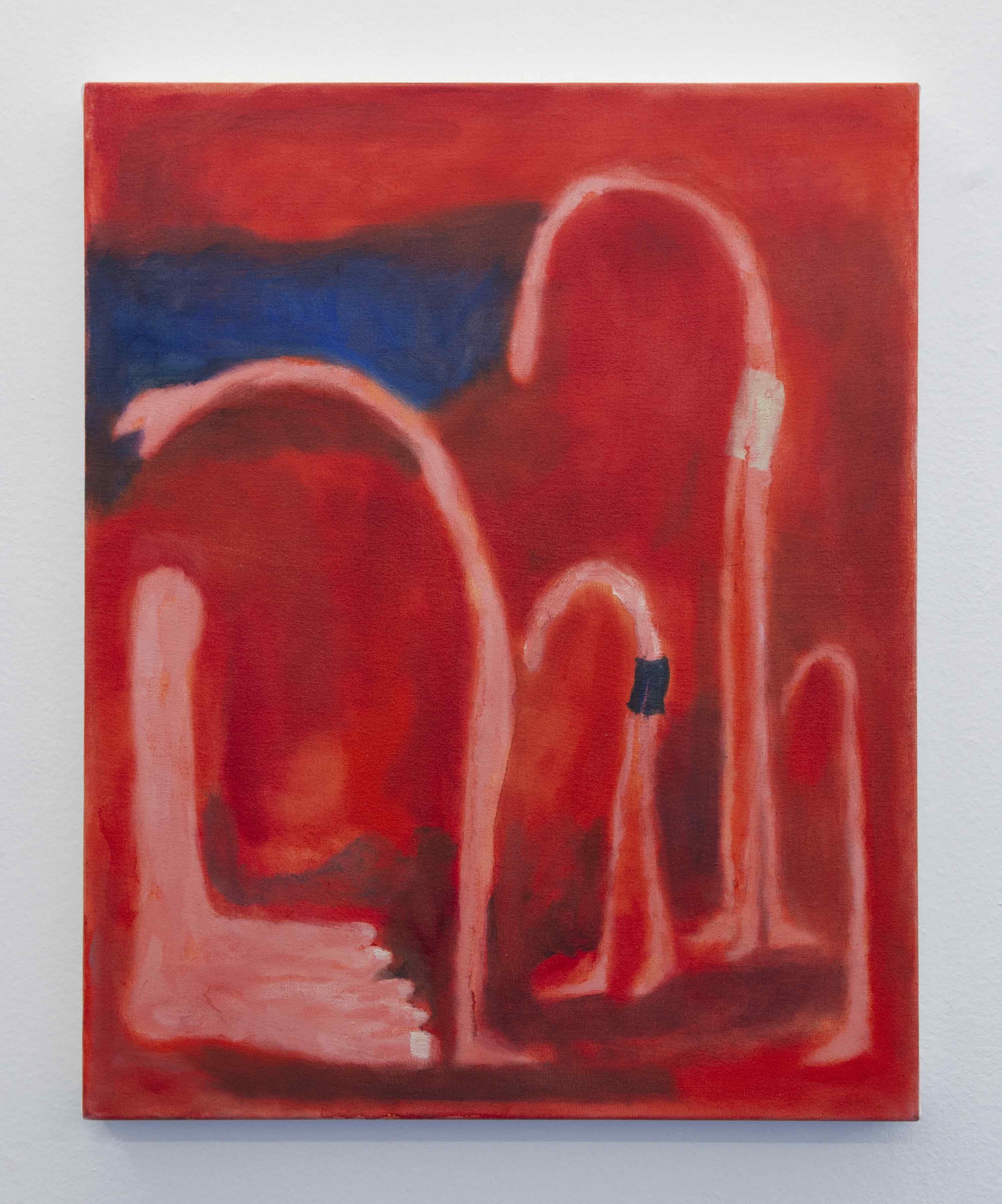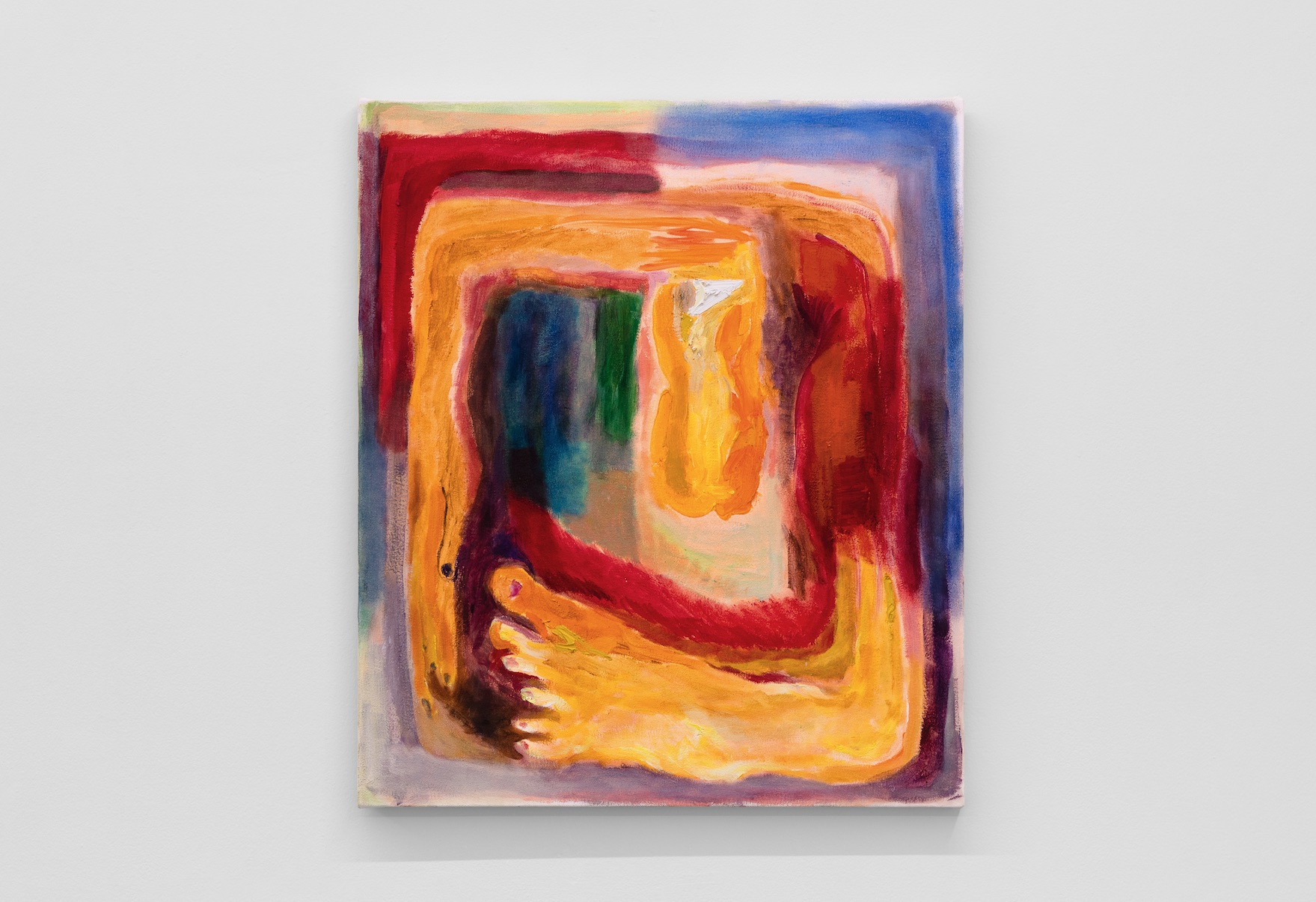
Interview
The Possibilities of Sickness. Lucía Vidales
by Fernanda Ballesteros
Reading time
4 min
Either it is a fairy tale, or it is gossip:
clutter,
tannngle,
messsss.
A story outlines ______________ what is worthy of memory.
Puts in order the c h a o s: plays in order to draw it.
Lucía Vidales tells me that entanglement, h[y]ster[ia], her history, spring from mutilated legs, from the possibilities of sickness, from the holes, from the shadows. Lucía looks for shadows in our video call. Too much light at eleven o’clock in the morning in Monterrey, she closes the curtains so that the sun’s tongues do not burn white the colors of her canvases. She is starting her day; I am starting my night. I’m in the living room of an apartment in Berlin, on my third glass of rosé, as far as possible from my friends who are in the kitchen, wrapped in colorful fabrics, learning traditional Turkish dances in a prelude to drunkenness.

Lucía tells me that there it’s hot, very hot, that she’s working in large format and she likes it. Half-blurred by the bad connection, I see two of her paintings in the virtual tour. I wish I could take this glass there and calmly observe the matte, transparent, silky, opaque fluids that form members of one body or of various. She speaks to me about the Prado Museum, about religious paintings that inspire her. Not because of doctrine, but rather because of what they tell, because of the infinite versions of the same biblical verse. Or miraculous verse. Like that of Saints Cosmas and Damian. Twins who survived when they wanted to char them. They had to cut off their heads. Martyrs, with their skulls sewn to the soul’s bodies, descended from Heaven to Earth, attracted by the prayers of the deacon Justinian. The twins, while Justinian slept, cut off his diseased leg and placed another there. The new limb was chosen from a black slave—muscular, recently deceased. Lucía spent two years studying and experimenting with this miracle. It’s not the first. For centuries, the scene has been painted and sculpted, sometimes with the living slave, sometimes without. (Who is vertical? Who is horizontal?) Sometimes with the martyrs present, sometimes with sober colors, sometimes not. The contrast between black and white, and the very crazy colors of the diseased leg. In how many tonalities and styles has the same story been revived? Is it still the same? What Lucía likes are the layers leading to a misunderstanding, blaming or thanking artists for leaving false documents in History with a capital H, namely that history that tries to leave truth from a neutral (?) perspective.
.jpg?alt=media&token=b0a10ae6-d2f7-47df-bd08-9f3c9378e16f)

I’m not looking for a moral position, Lucía tells me as she changes the subject to La Malinche and the role she established between two worlds. La Malinche as one of the most famous translators of HHHistory. And Painting: is that translation? What do we gain and what do we lose with it? How much do we need it in order to understand history through micro-histories captured on canvas?
In the end it doesn’t matter, it’s not so descriptive, Lucía tells me. They’re things on my mind when I paint.
And in the end, what is it that matters?
Understanding nature as a flow between objects and parts of the body. Or painting as a false document, as a set of living entities that influence change in the perspective of History.
Translated to English by Byron Davies.

Lucía Vidales is a University teacher in the UDEM's Arts Program.
Now and until July 13, Lucía Vidales is showing her work in the exhbition Manoteta at Peana gallery, San Pedro Garza García, Nuevo León.
Published on June 26 2021